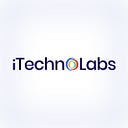What are the Pros And Cons For Choosing Flutter for App Development?
You may not realize it, but you’ve likely used applications created by Flutter. You may have shopped at Alibaba or run an ad campaign through Google Ads or paid with Google Pay or coupons that were digital. You’ve probably seen the outcomes of Flutter’s relatively short existence.
After the launch of its alpha version on May 17, 2017, as well as then the official stable version launched in December 2018. It took Flutter a long time to achieve immense popularity, as evidenced by the number of stars on GitHub (143k against the 104k of React Native). It continues to draw more attention than other technologies.
In May 2020, Flutter’s 3rd Generation of Flutter was launched, with enhancements and improvements that offer a more user-friendly experience for both users and developers alike. We looked under the hood to uncover Flutter’s benefits and drawbacks. We also helped you determine whether it’s the right fit for your app of the future.
What is Flutter?
Flutter is Google’s open-source technology that allows the development of desktop, mobile, and web applications using the same codebase. Contrary to other popular options, Flutter app development is not an application framework or library, it’s a complete SDK software development kit. Let’s clarify this a bit to ensure that we’re all on the same page.
The term “library” refers to a library that is essentially a reusable part of code that can be included in your program to accomplish a specific function.
Frameworks are an arrangement that provides users with a basic structure to build software. It’s a collection of tools that form the foundation of your application and requires users to complete the gaps by writing code to create the whole structure and achieve the functionality you want.
The term “SDK” refers to a set of tools/ or software development kits. SDK offers a larger application since it’s a bundle of tools, which include documentation, libraries, APIs, often frameworks, and even more that provide everything you require for developing software. This is the case with Flutter. It already has everything needed to develop cross-platform software.
Other technology options like Xamarin, React Native, Ionic, and NativeScript can also be used to build apps that function across different platforms. We provide a thorough analysis of these cross-platform applications in a special article. What exactly does Flutter have to provide?
Flutter SDK
Because Flutter app development is a complete SDK, it has a rendering engine with ready-made widgets and integration and testing APIs as well as integration APIs. Let’s discuss the major components and how it functions generally.
The three major structural layers that comprise Flutter app development are
- An embedder that utilizes an OS-specific language that lets the application run across any OS;
- An engine is written in C/C++, which provides an implementation at a lower level of Flutter’s fundamental APIs. This comprises images (through Skia 2D graphics library) and text layout I/O from network and file systems accessibility, as well as plugin architecture and a Dart runtime toolchain, and
- A framework that is based on the Dart programming language. Its implementation isn’t required however it comes with an array of libraries that can be separated into layers: the fundamental foundational classes such as layers of rendering, widget layers, and the Material/Cupertino library.
Here are the details. First, the technology behind Flutter’s base can be described as Dart. It’s an optimized client-side object-oriented programming language that was created by Google. Dart is capable of converting into native code that can be used on mobile and desktop computers, and to JavaScript. Because it is a directly compiled code, it does not require a bridge to connect with the platform like, for instance, ReactNative. This significantly improves the start-up time as well as the overall performance. We’ll go into more detail about this in the following sections.
A key component of Flutter is the widgets. They are part of the Flutter SDK and function as building blocks to be used to cover all aspects of development. Flutter app development not only offers an array of ready-made widgets but also permits users to modify the ones they like or design their own.
Flutter also has automated test tools specifically for three kinds of tests that include widget test, unit test, and integration test. Below are Google’s instructions for these tests. Additionally, Flutter supports the Continuous Delivery model through Fastlane which is a platform for free that connects Flutter with well-known CI tools like Travis, Jenkins, or Cirrus (check the manual for more information on continuous delivery using Flutter).
Debugging in Flutter is carried out by using Flutter’s DevTools (also known as Dart DevTools). They are used to examine layout, analyze the performance of apps, debug them, and more.
Read more about Pros And Cons For Choosing Flutter for App Development
